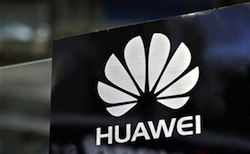Huawei said its new GigaRadio base station, unveiled at Mobile World Congress (MWC) in Barcelona, will facilitate massive deployment of commercial 4.5G networks globally, and pave the way for 5G services after 2020.
Huawei’s GigaRadio base station is a more diminutive and better performing solution than previous LTE versions, and is also easier to install. The company claimed it provides a 50 percent jump in processing power and a 20 percent decrease in size, and outpaces competitors’ product roadmaps by about a year.
The Chinese vendor said the product will be widely used to deliver 1Gbps LTE performance and high quality voice and video services, as well as new opportunities in Narrow Band Internet of Things (NB-IoT). It suggested it will be the basis for the deployment of 60 commercial 4.5G networks in 2016.
Huawei made the claims at its 4.5G Industry Summit in Barcelona, on the eve of MWC event proper. It joined various mobile operators, analysts and commentators at the function to talk up the rise of 4.5G.
Ryan Ding, Huawei Executive Director and President of Products and Solutions, proposed the new era of wireless connectivity should be categorised by data speeds of at least 1Gbps, a new digital ecosystem and massive machine connectivity.
Ding made the point that 4.5G technology, or LTE-Advanced Pro, is the only way to evolve towards 5G. 4G and 5G are expected to coexist for a long period of time, he said, and operators cannot afford to take their feet off the gas if innovation is to thrive and they are to maintain their influence.
He said: “4.5G will allow operators to protect further investment through the reallocation of existing infrastructure and resources to offer higher data rates and improved user experiences. 4.5G allows operators to deploy NB-IoT, broadband trunking, and additional new technologies to existing networks. This enables operators to fully maximize advantageous latent potential to better serve vertical markets.”



